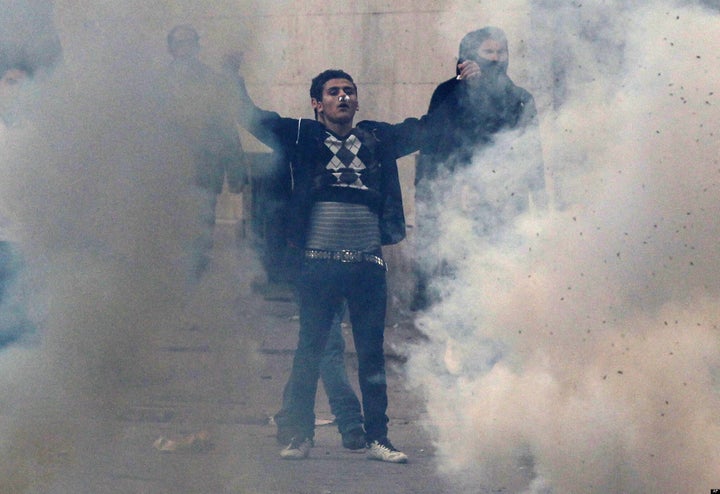
Since the spring of 2009, scholars and pundits alike have been debating the role technology has played the spate of uprisings across the Middle East and Africa. From Iran in 2009 to Egypt in early 2010 to the uprisings still taking place today, the web has clearly played a new and central role, in effect differentiating these revolutions from any that have come before. To date, most of this debate has focused on how important so-called social media services have been in organizing and carrying out these protests, with prominent minds on both sides of the argument. But while this debate continues to rage, I'd like to focus on a completely different aspect -- a feature that has been largely ignored. I'd like to look at the web as a metaphorical spotlight, casting attention on people and parts of the world all too easily overlooked before.
The pages on Facebook used to mobilize demonstrations, the trending topics on Twitter and the videos showing protesters taking to the streets: technology has not only made it possible for people around the world to peer into lives and circumstances across the globe, it's made them impossible to ignore. In the parts of the world where the open Internet has taken root, government oppression can no longer be overlooked.
Once upon a time, repressive regimes could cover up their crimes; they could make it impossible for reporters to gain access, for international observers to enter their countries, for citizens to flow in and out bringing news with them. New York Times columnist Nicholas Kristof even commented on Facebook recently:
People often ask why there isn't more coverage of Syria, Ivory Coast or Yemen. One answer is something that non-journalists sometimes don't appreciate -- the difficulty of getting visas... [The] sad truth is we systematically undercover what we don't get access to.
But what Kristof doesn't mention is that today, as never before, a journalist can cover what's happening in a country without actually being in it. I grant that it's no replacement for quality on-the-ground reporting, but technology has allowed us to see into many parts of the world that were previously shrouded by oppressive governments or geographical boundaries.
The recent revolution in Egypt also paints a prime example of this. When the revolution broke out, the Egyptian government made it very difficult for Western journalists to gain entry. Many taxi drivers even refused to carry journalists for fear of the pro-government forces' reprisals. And yet, coverage continued. Despite the hardships, journalists were still able to gather information. The New York Times even used a blog to explicitly supplement their coverage with news gathered from the web, in addition to including information found on Facebook, YouTube and Twitter in its regular coverage. This newly-found visibility allowed everyday citizens across the world to look in on the situation in Egypt. What journalists may once have been unable to report on, what world leaders may once have been able to ignore, became both apparent and unmistakable.
I would argue this a step further though: not only does technology illuminate events around the world, it also has the power to prompt global action both more expediently and unconventionally than ever before. I'll tell you a story to illustrate the point. Think back to 2009, and try to remember the name Neda Soltan. It was the height of the popular Iranian uprising, and a woman named Neda Soltan, just 26 years old, was gunned down in the street, caught in the crossfire and thoughtlessly murdered by pro-government forces. It was unmistakably a tragedy. But unlike many similar tragedies lost in the chaos of the events, this one by chance was captured on video by a bystander and quickly posted to YouTube. Overnight, the video became both a tableau for the regime's oppression as well as a rallying cry against the Iranian government, circulating not only throughout Iran, but throughout the world. In fact, just days after the incident, none other than the president of the United States, a man some would call the leader of the free world, watched this very same video. Not only did he see it, he commented publicly on it, declaring the U.S. government "appalled and outraged", seriously intensifying his criticism of the Iranian government's violent tactics. Now think back to the days before the Internet was a household phenomenon, and try to imagine just how improbable it would be for this cross to the president's desk? And yet, in 2009, a tragedy that once would have been lost on the streets of an uprising ended up proving just how potent a spotlight the Internet could be.
Though the debate over the role of the Web in organizing these movements may continue, it cannot be argued that the Internet became a key tool in creating visibility. All you have to do is look at the reporting and look at the results.
